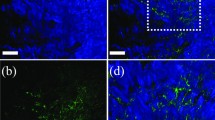Abstract
A constitutive model is proposed for the description of the tensile properties of medial collateral ligaments (MCLs). The model can reproduce the three regions – the toe region, the linear region, and the failure region – of the stress–stretch curve of ligamentous tissues. The collagen fibers are assumed to be the only load-bearing component of the tissues. They are all oriented along the physiological loading direction of the ligament. They are crimped in the slack configuration and are unable to sustain load. After becoming taut and before failing, each collagen fiber exhibits a linear elastic behavior. The fiber straightening and failure processes are defined stochastically by means of Weibull distributions. Published experimental data for the MCLs are employed to validate the constitutive relationship. Finally, the constitutive model is generalized in order to describe the three-dimensional mechanical behavior of the ligaments by following he structural approach.
Similar content being viewed by others
References
Abramowitch SD, Papageorgiou CD, Debski RE, Clineff TD, Woo SLY (2003) A biomechanical and histological evaluation of the structure and function of the healing medial collateral ligament in a goat model. Knee Surg Sport Tr A 11:155–162
Amiel D, Billings E Jr, Akenson WH (1990) Ligament structure, chemistry, and physiology. In: Daniel DM, Akeson WH, O’Connor JJ (eds) Knee ligaments: structure, function, injury and repair. Raven Press, New York
Bollen S (2000) Epidemiology of knee injuries: diagnosis and triage. Br J Sport Med 34:227–228
Comninou M, Yannas IV (1976) Dependence of stress–strain nonlinearity of connective tissues on the geometry of collagen fibers. J Biomech 9:427–433
Decraemer WF, Maes MA, Vanhuyse VJ, Vanpeperstraete P (1980) A non-linear viscoelastic constitutive equation for soft biological tissues based upon a structural model. J Biomech 13:559–564
De Vita R, Slaughter WS (2006) A structural constitutive model for the strain rate-dependent behavior of anterior cruciate ligaments. Int J Solids Struct 43:1561–1570
Diamant J, Keller A, Baer E, Litt M, Arridge RGC (1972) Collagen; ultrastructure and its relation to mechanical properties as a function of ageing. Proc Roy Soc Lond B Biol 180B:293–315
Findley WN, Lai JS, Onaran K (1976) Creep and relaxation of nonlinear viscoelastic material. Dover, New York
Fung YC (1993) Biomechanics: mechanical properties of living tissues. Springer, Berlin Heidelberg New York
Humphrey JD, Yin FC (1997) A new constitutive formulation for characterizing the mechanical behavior of soft tissues. Biophys J 52:563–570
Hurschler C, Loitz-Ramage B, Vanderby R (1997) A structurally based stress–stretch relationship for tendon and ligament. J Biomech Eng—T ASME 119:392–399
Kastelic J, Galeski A, Baer E (1978) The multicomposite structure of tendon. Connect Tissue Res 6:11–23
Kastelic J, Palley I, Baer E (1980) A structural mechanical model for tendon crimping. J Biomech 13:887–893
Kukreti U, Belkoff SM (2000) Collagen fibril D-period may change as a function of strain and location in ligament. J Biomech 33:1569–1574
Kwan MK, Woo SLY (1989) A structural model to describe the nonlinear stress–strain behavior for parallel-fibered collagenous tissues. J Biomech Eng—T ASME 111:361–363
Lanir Y (1979) A structural theory for the homogeneous biaxial stress–strain relationship in flat collageneous tissues. J Biomech 12:423–436
Lanir Y (1980) A microstructural model for the rheology of mammalian tendon. J Biomech Eng—T ASME 102:332–339
Lanir Y (1983) Constitutive equations for fibrous connective . J Biomech 16:1–12
Liao H, Belkoff SM (1999) A failure model for ligaments. J Biomech 32:183–188
Nelder J, Mead R (1965) A simplex method for function minimization. Comput J 7:308–313
Park SK, Miller KW (1988) Random number generators: good ones are hard to find. Commun ACM 31:1192–1201
Press WH, Flannery BP, Teukolsky SA, Vetterling WT (1992) Numerical recipes in C: the art of scientific computing. Cambridge University Press, Cambridge
Provenzano PP, Lakes R, Keenan T, Vanderby R (2001) Nonlinear ligament viscoelasticity. Ann Biomed Eng 29:908–914
Provenzano PP, Heisey D, Hayashi K, Lakes R, Vanderby R Jr (2002) Subfailure damage in ligament: a structural and cellular evaluation. J Appl Physiol 92:362–371
Provenzano PP, Lakes RS, Corr DT, Vanderby R Jr (2002) Application of nonlinear viscoelastic models to describe ligament behavior. Biomech Model Mechanobiol 1:45–57
Sacks SM (2000) A structural constitutive model for chemically treated planar tissues under biaxial loading. Comput Mech 26:243–249
Sasaki N, Odajima S (1996) Stress–strain curve and Young’s modulus of a collagen molecule as determined by x-ray diffraction technique. J Biomech 29:655–658
Schapery RA (1969) On the characterization of the nonlinear viscoelastic materials. Polym Eng Sci 9:295–310
Stouffer DC, Butler DL, Hosny D (1985) The relationship between crimp pattern and mechanical response of human patellar tendon–bone units. J Biomech Eng—T ASME 107:158–165
Thornton GM, Frank CB, Shrive NG (2000) Ligament creep behavior can be predicted from stress relaxation by incorporating fiber recruitment. J Rheol 45:493–507
Truesdell C, Noll W (1965) The non-linear field theories of mechanics. Springer, Berlin Heidelberg New York
Viidik A (1969) A rheological model for uncalcified parallel-fibered collagenous tissue. J Biomech 1:3–11
Wren TAL, Carter DR (1998) A microstructural model for the tensile constitutive and failure behavior of soft skeletal connective tissues. J Biomech Eng—T ASME 120:55–61
Zioupos P, Barbenel JC (1994) Mechanics of native bovine pericardium II. A structural based model for anisotropic mechanical behaviour of the tissue. Biomaterials 15:374–382
Author information
Authors and Affiliations
Corresponding author
Rights and permissions
About this article
Cite this article
De Vita, R., Slaughter, W.S. A constitutive law for the failure behavior of medial collateral ligaments. Biomech Model Mechanobiol 6, 189–197 (2007). https://doi.org/10.1007/s10237-006-0054-x
Received:
Accepted:
Published:
Issue Date:
DOI: https://doi.org/10.1007/s10237-006-0054-x




